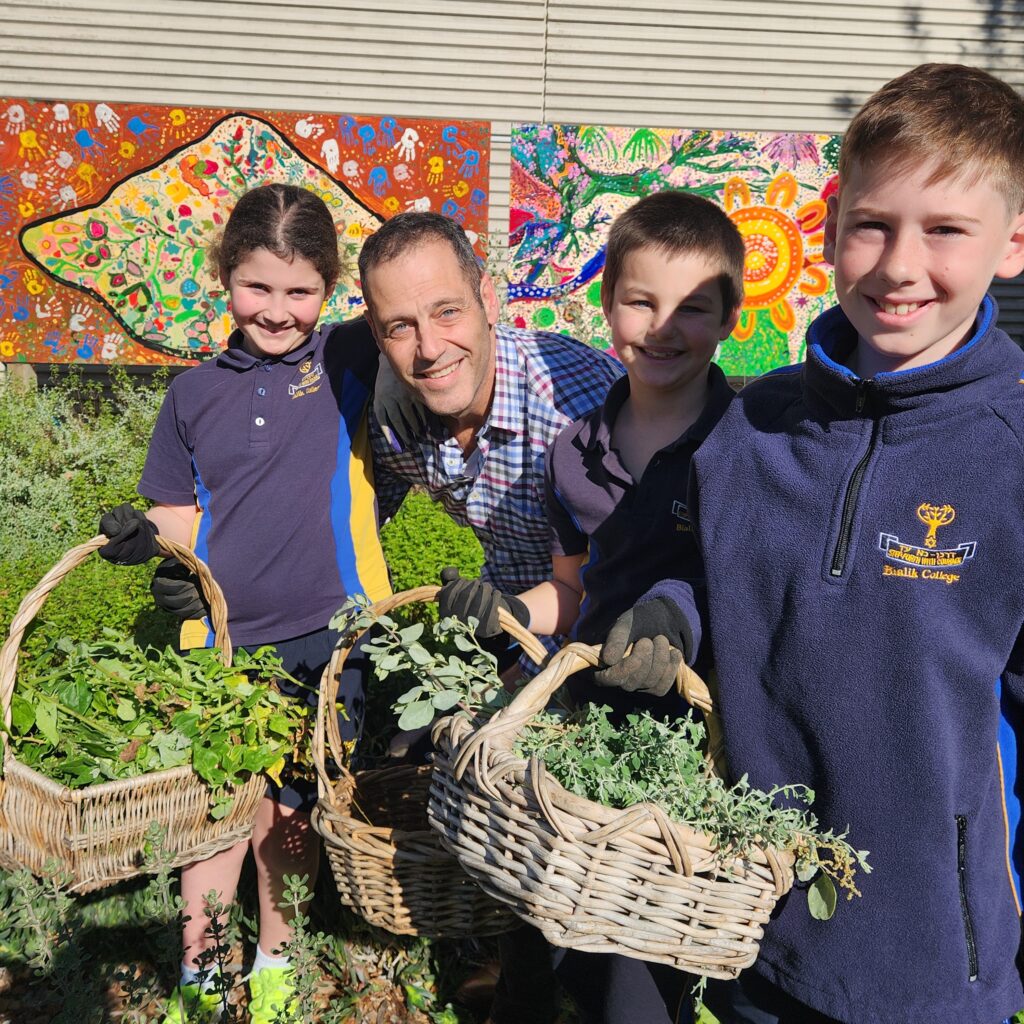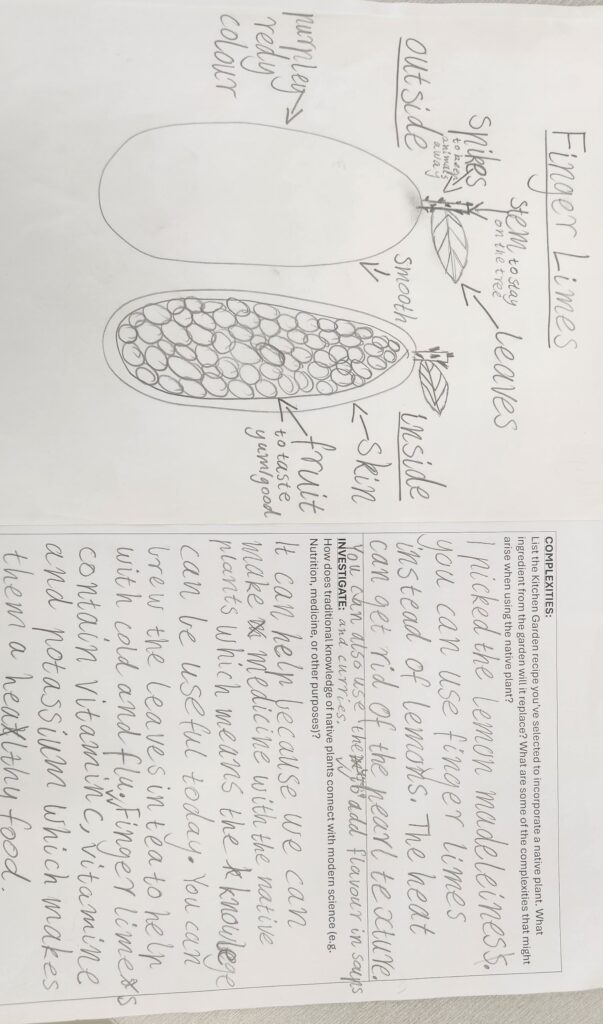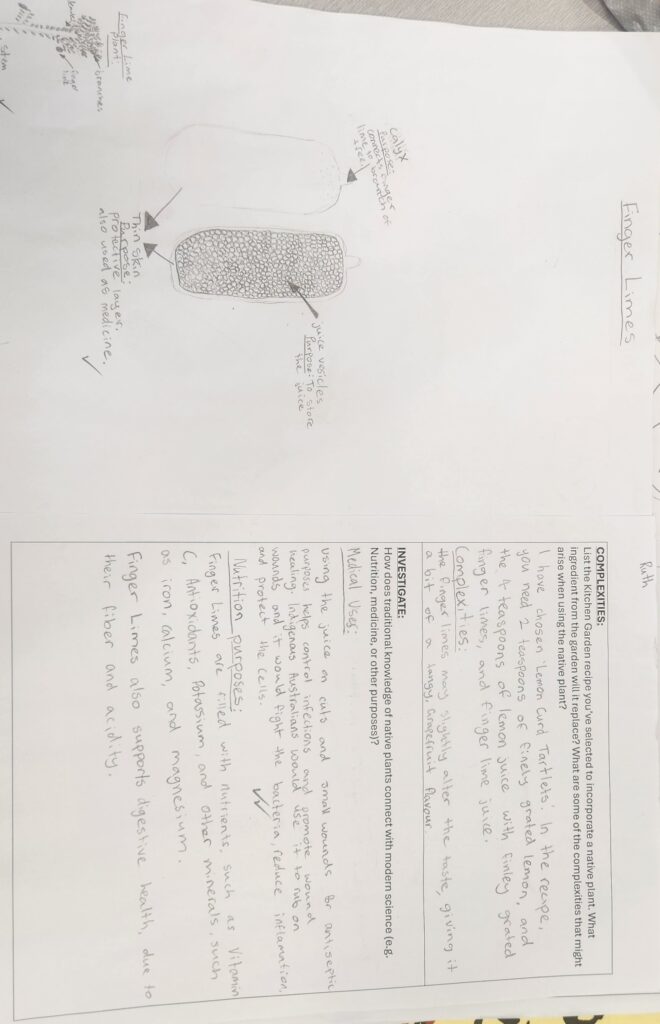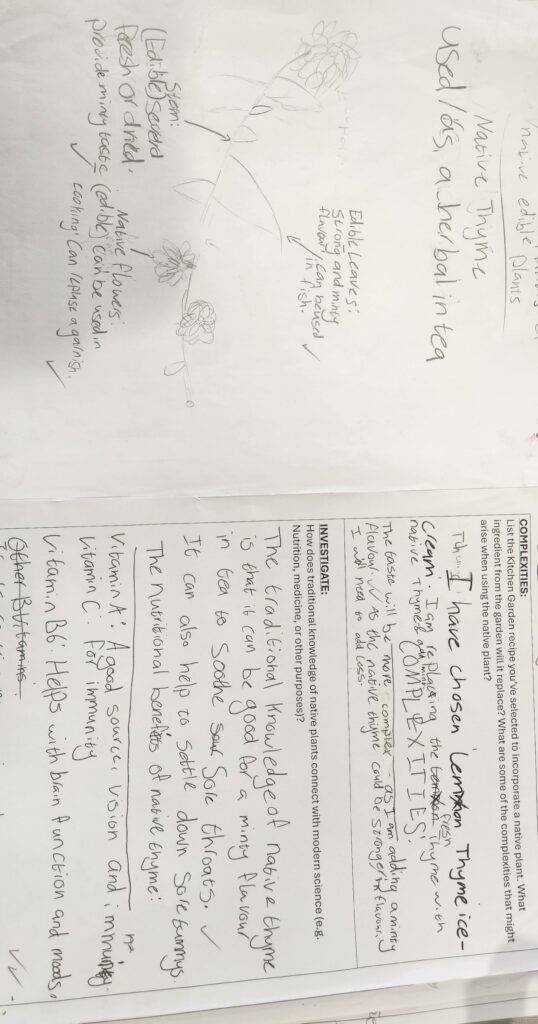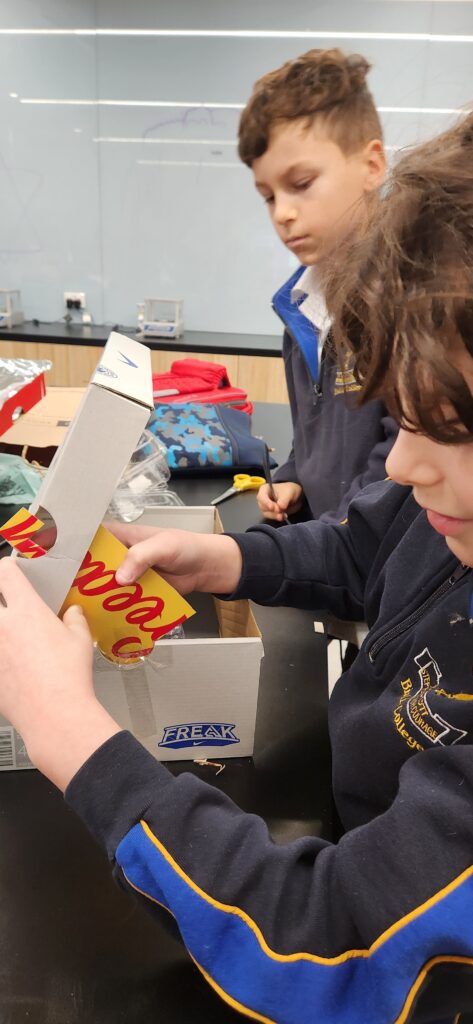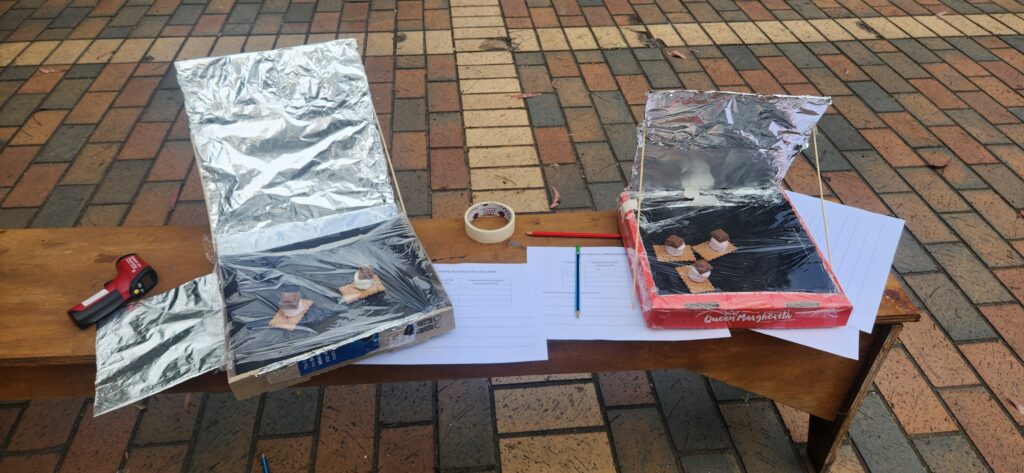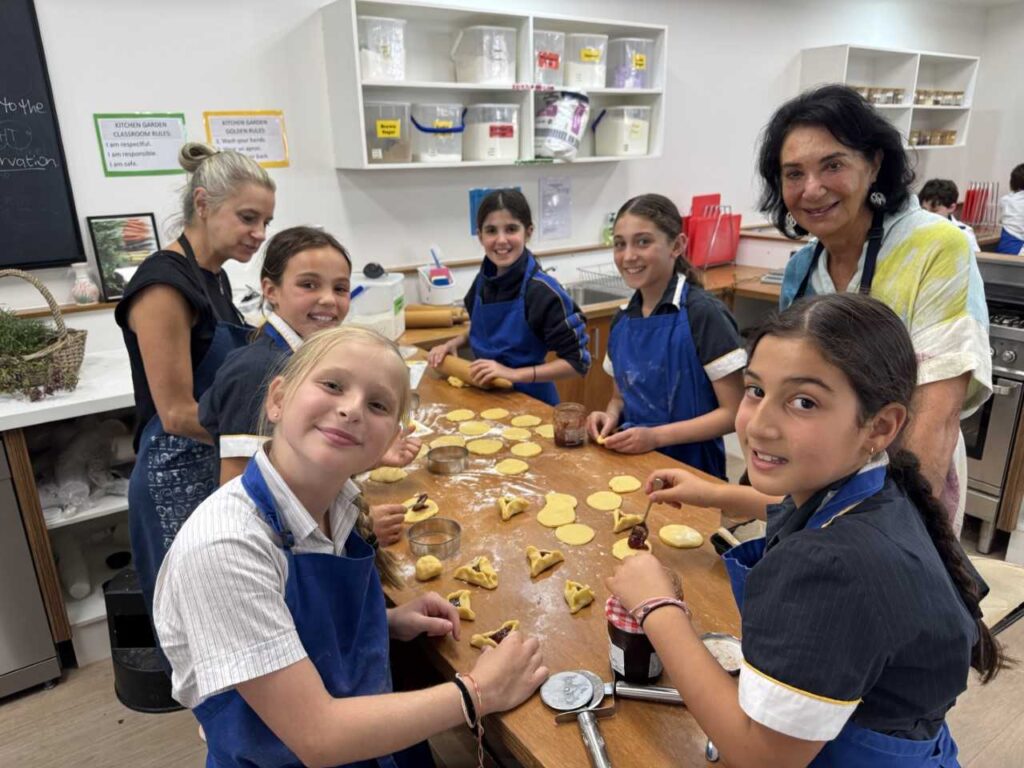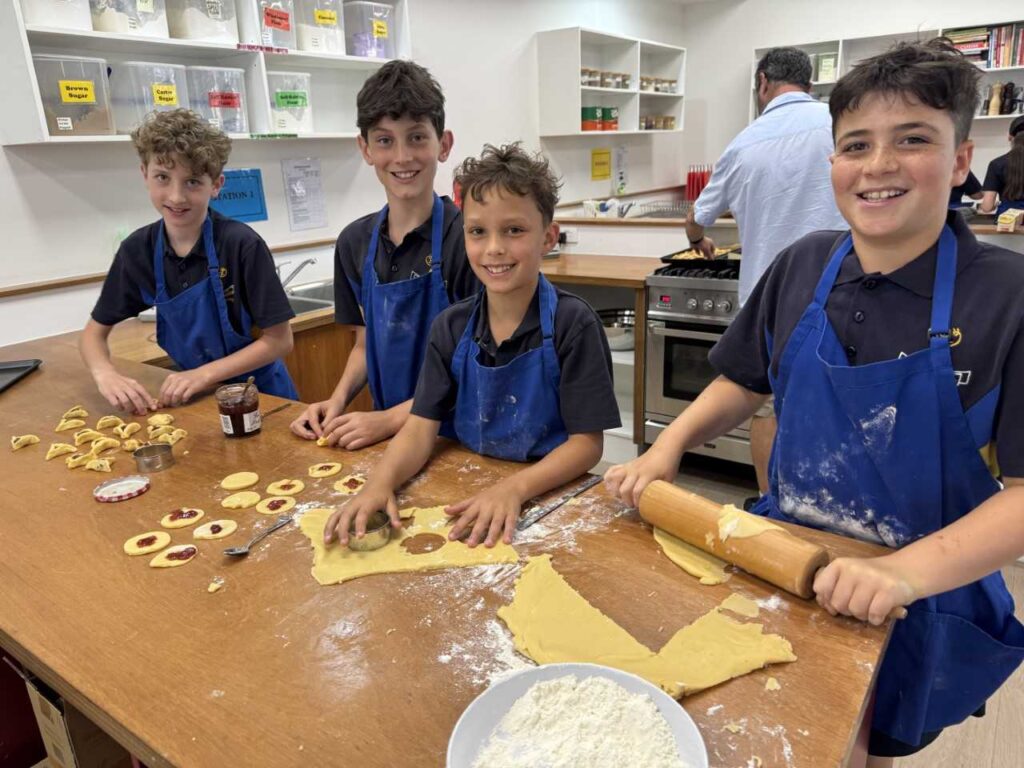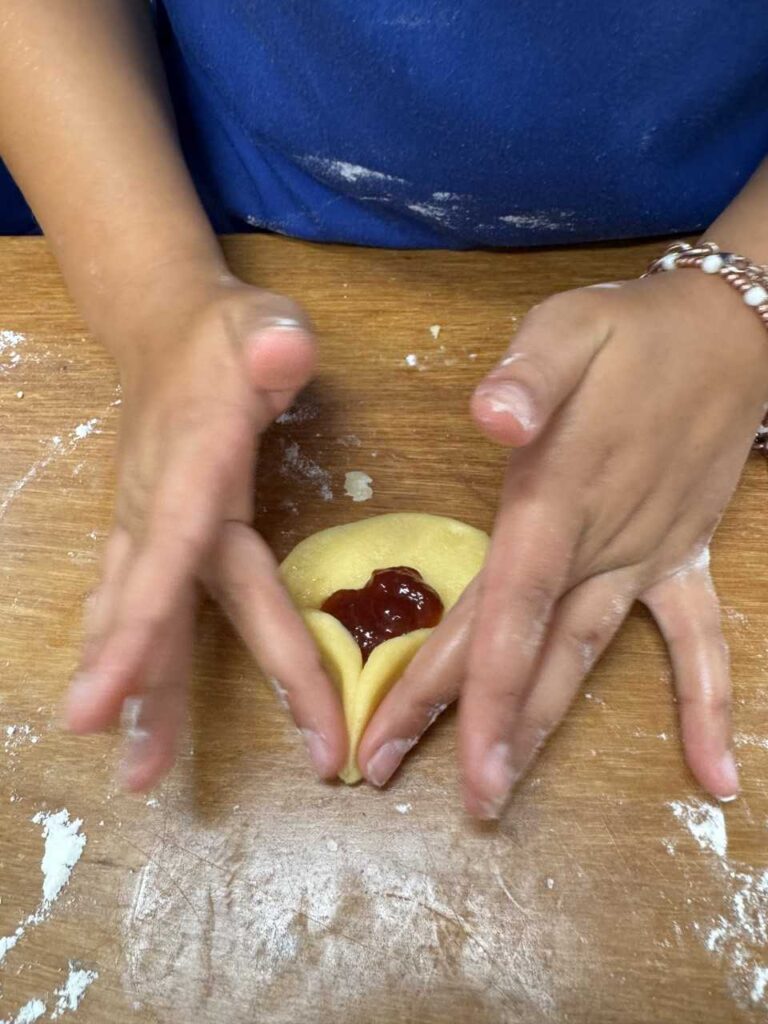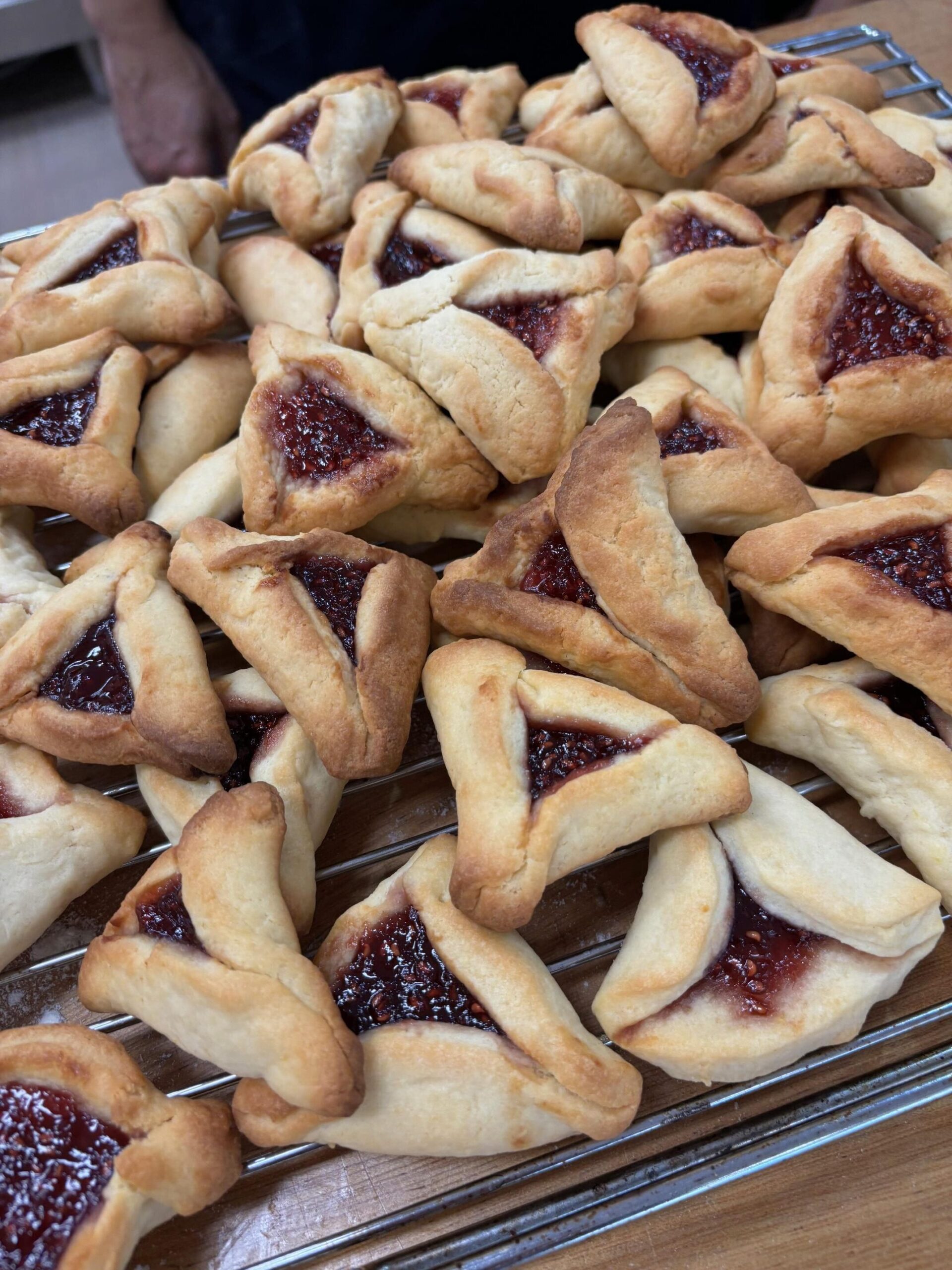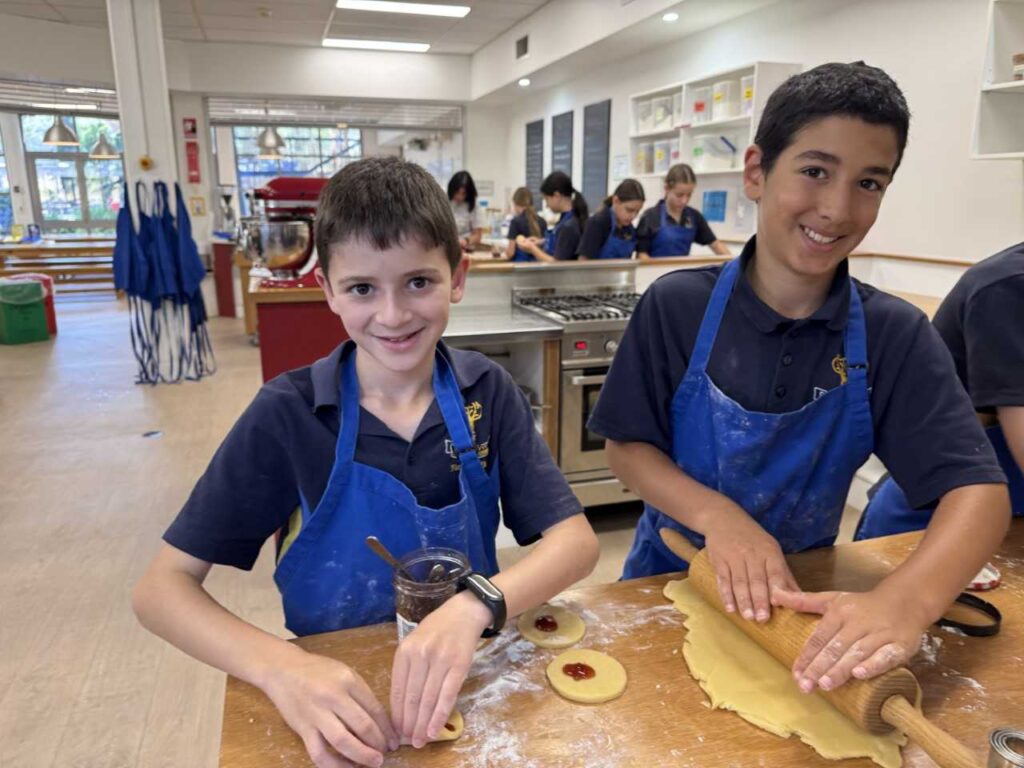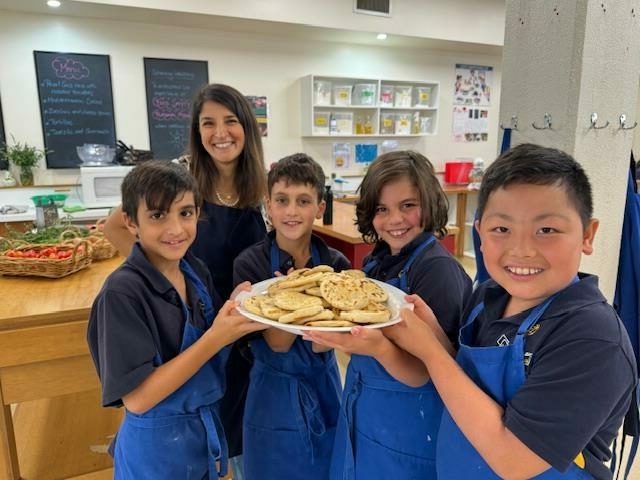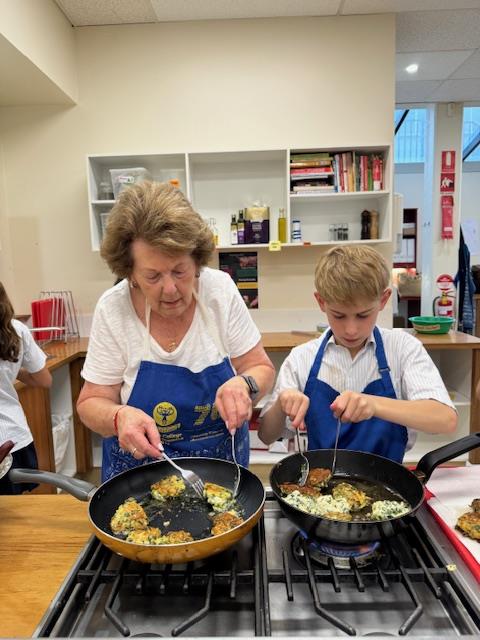This term in the Kitchen Garden Program, students have been delving into the fascinating world of native edible plants and discovering how these species have adapted to thrive in Australia’s unique environments. Plants such as Warrigal greens, finger limes, native herbs and pig face.
Students investigate structural features such as waxy or hairy leaves that reduce water loss, deep root systems designed to access underground moisture, and the ability of some plants to store water in their stems or fruits in order to help plants thrive in dry conditions.
In the kitchen classroom students discussed how native ingredients could replace non-native ones and considered the challenges or adjustments needed when incorporating them into recipes. They made connections between traditional knowledge and modern science, recognising links to nutrition, medicine, and other contemporary applications.
Through this integrated study of science, culture, gardening, and cooking, students continue to build a deeper understanding of sustainability and the interconnectedness of people, plants, and place.
